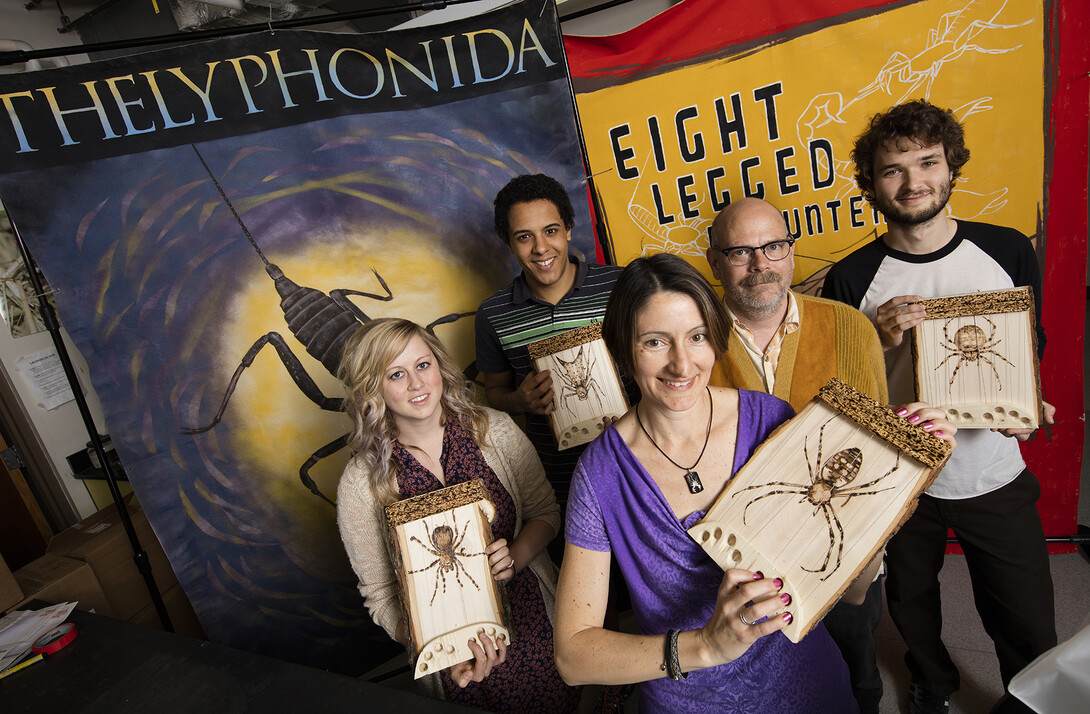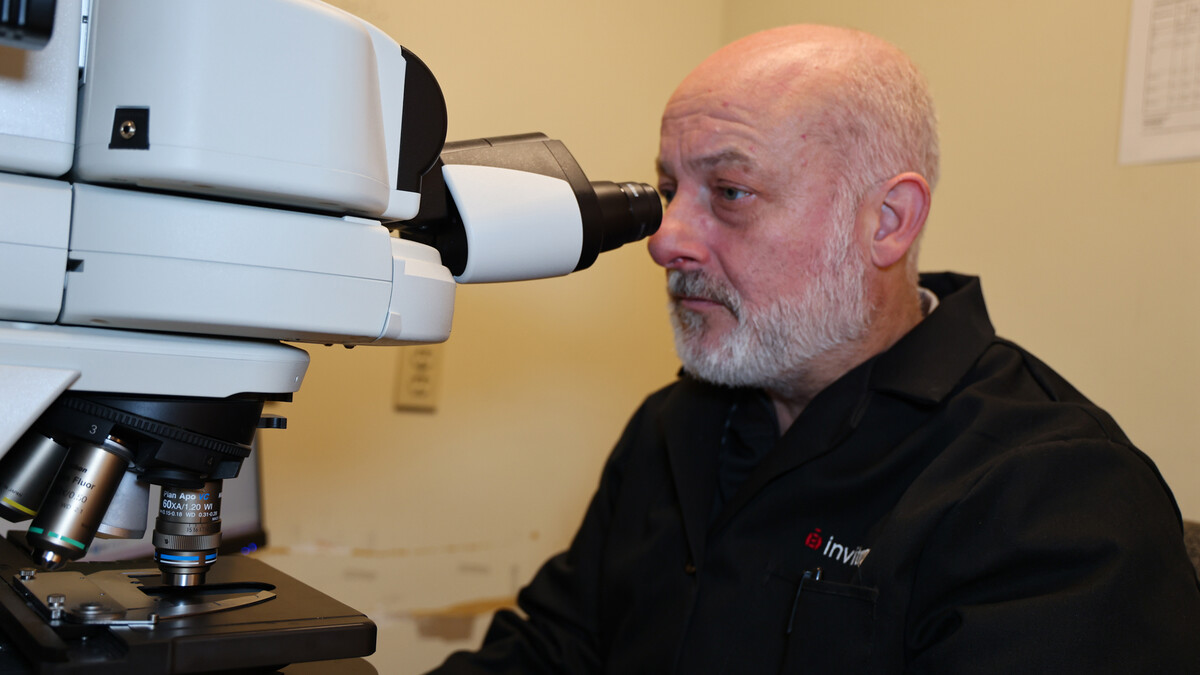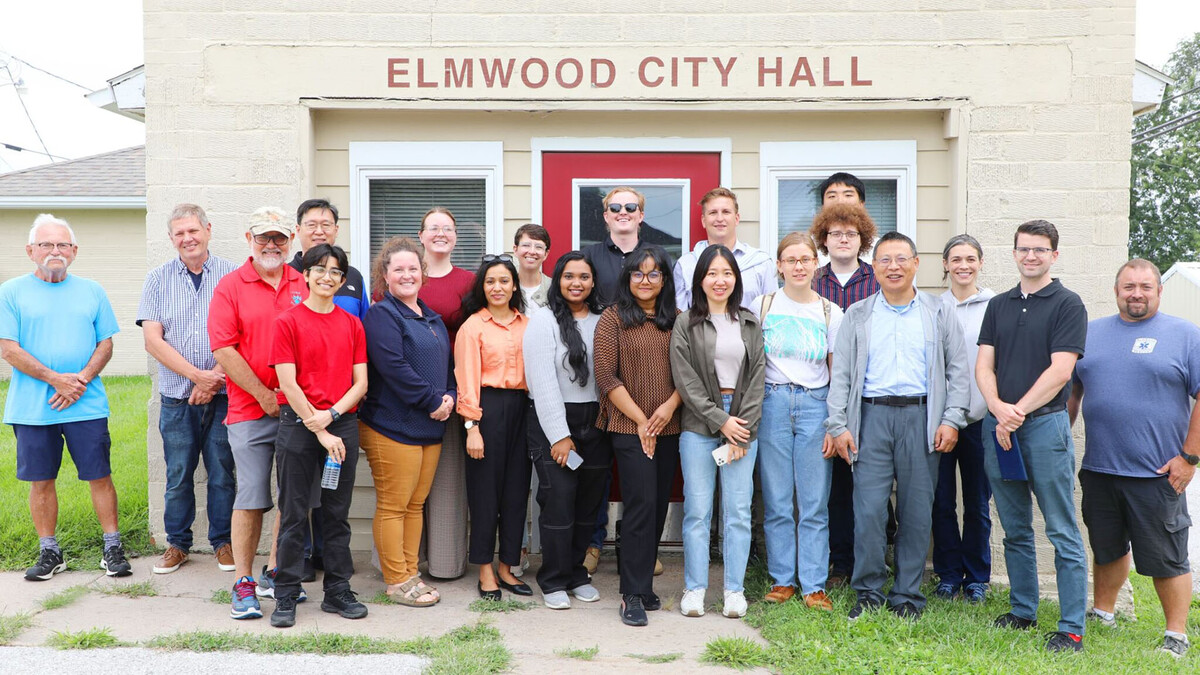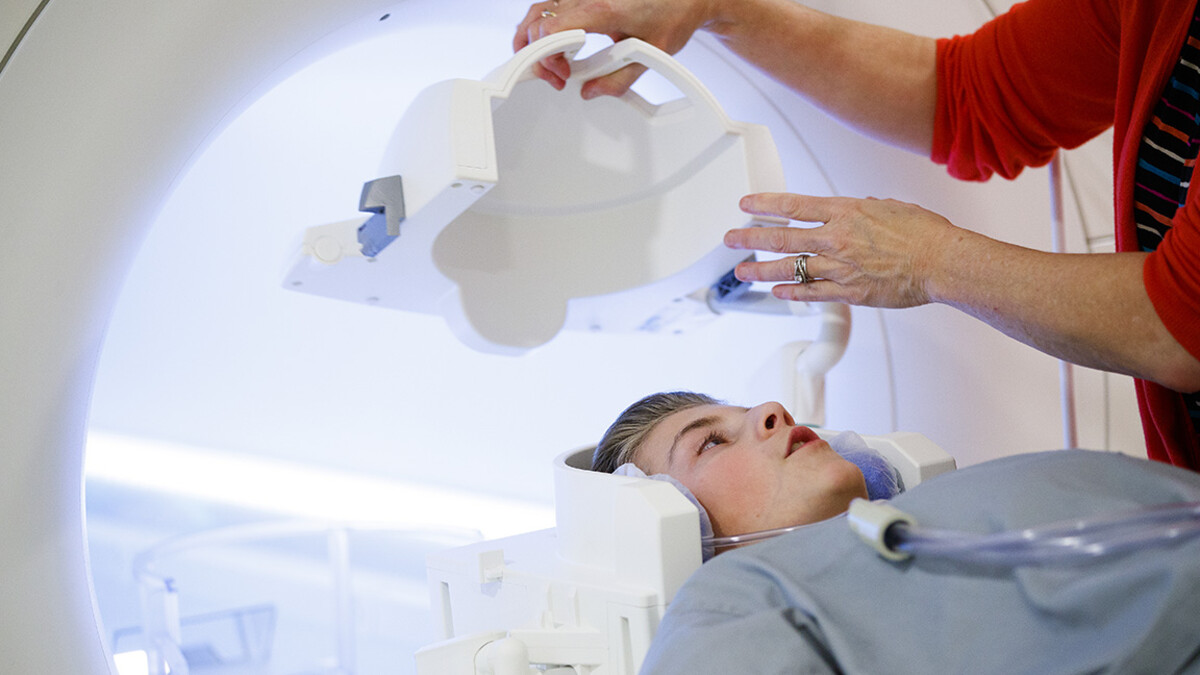
Take it from Eileen Hebets: If you’re the potential predator or prey of an arachnid, your eight-legged encounter may not end well.
Say you’re a raccoon looking to snack on a vinegaroon, one of the 11 orders of critters in the class Arachnida. Its name might have warned you to expect the face full of vinegar-reeking acid spraying forth from the creature’s tail.
Or perhaps you’re a moth, idly minding your own business in the middle of the night, when you catch the aroma of a pheromone that signals a potential female mate is nearby. You follow your antennae toward the scent, only to be snared by a sticky silk lasso swung by a bolas spider that’s now hauling you up like a fish.
Hebets’ eyes brighten as she relays these scenarios, her enthusiasm evident with every word. It’s the same enthusiasm that motivated the UNL professor of biological sciences to design an accessible, informative way of helping others see arachnids the way she does.
The result was Eight-Legged Encounters, an activity- and art-laden exhibit that Hebets – with the help of UNL graduate students and fellow arachnologists from across North America – will present April 15-17 at the USA Science and Engineering Festival in Washington, D.C.
“The main, overarching goal of Eight-Legged Encounters is to expose the public to biodiversity, using arachnids as an example,” Hebets said. “As soon as you can pull people in who don’t have any science background and start to tell them these stories, they’re just captivated.
“Every time we take something like this out to the general public … the feedback we get is unparalleled.”
Hebets and her colleagues should receive plenty of feedback at the festival, where they’ve been told to expect upward of 30,000 visitors. In addition to giving those visitors a glimpse at live arachnid specimens, the exhibit will feature activities that demonstrate how adaptive, weird and spectacular the creatures really are.
A combination of vinegar-filled spray bottles and cotton balls will allow participants to smell just how potent the vinegaroon’s defense mechanism can be. They can also try swinging Velcro-covered pingpong balls to snag hanging “moths” made of felt – a fun feat still challenging enough to conjure respect for the bolas spiders that manage it in the wild.
Another customized contraption, this one resembling the body of an eight-string dulcimer, mimics the sensory experience of trapdoor spiders that set silk trip wires and prime themselves to attack at the first vibration. After donning vision-impairing goggles, visitors place their fingers on the contraption’s strings and try to identify the ones being stimulated by an electronic toothbrush.
More than just spiders
The condensed version of the exhibit that Hebets is transporting to the festival will showcase four orders of arachnids, including the star attraction: spiders. But by also highlighting the distinctive qualities of scorpions, vinegaroons and amblypygids, Hebets said she hopes to illustrate the breadth of radical behaviors and physical forms that arachnologists have been discovering for centuries.
That diversity, she said, also lends itself to teaching lessons about a variety of natural and physical science principles.
“For example, a lot of the modules that we have deal with silk,” Hebets said. “We deal mostly with spider-specific silk and convey that spiders can have up to eight different silk glands, and that each of these silks has different physical properties. So we can pull in biomaterials and engineering and biomedical research and physics and evolution.”
Hebets said the exhibit’s previous appearances – it also showed at the University of Nebraska State Museum and the Denver Museum of Nature and Science – have demonstrated that even a single afternoon can turn apathy into wonder.
“Kids are fascinated with animals, and whether their parents are or not, they go because their kids are,” Hebets said. “I love interacting with kids and encouraging them, but one of the greatest rewards is having parents who clearly had no interest in coming to this event – their children dragged them there – get completely wrapped up in it. And they’re the ones who can’t leave.
“They’re asking question after question after question. They leave saying, ‘This was amazing. I learned so much. I have a whole new appreciation for this group of organisms, but not only that – for science and the scientific process.’”
‘Blending of art and science’
From the outset, Hebets believed that incorporating art into the exhibit could “really draw in people who wouldn’t normally come.” But rather than commission a scientific illustrator, she reached out to Lincoln-based artist Pawl Tisdale.
“I wanted to see how someone who didn’t have the familiarity with these organisms would interpret them, in a way that I never would,” Hebets said. “Basically, I work with him and say, ‘Here’s what I’m envisioning. Can you make it more appealing, more eye-catching, more inviting and enticing?’”
Tisdale has since produced an array of arachnid-based artwork. He’s painted posters on canvass and etched designs into wood. He’s drawn figures for foldouts and created temporary tattoos for kids.
“It’s turned out to be a fabulous collaboration,” Hebets said. “What he produces is just amazing. People always say, ‘I was walking by – I had no intention of stopping – but then I saw this huge, original piece of art.’”
Grow your audience
Hebets said she considers the USA Science and Engineering Festival an “incredible opportunity” to bolster the public’s scientific literacy through exhibits like Eight-Legged Educators, which she developed with support from the National Science Foundation.
“In today’s political and funding climate for science, I think it’s so important to hit those people who aren’t getting exposed to science and really engage them in a way that they see a usefulness of scientists and of programs like this,” Hebets said. “I can do amazing research – and people can write stories all over about that research – but it still hits a very small group of people, many of whom are the same people that it’s hitting all the time.
“When you put on an exhibit like this, it’s just totally different – unmatched.”







